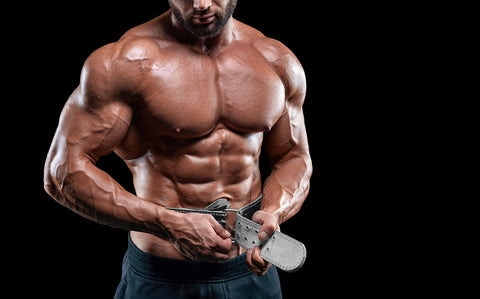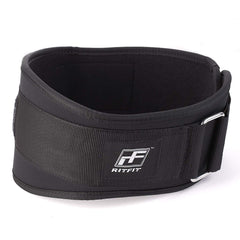What Does A Weightlifting Belt Do? (4 Most Important Things to Know)
In 2003, researchers did a significant study on weightlifting belt usage during weight lifting workout. They reported that only 27 percent of gym members who answered the poll used a belt. In the almost 20 years, that have passed. Since then, the use of belts during weight lifting has increased massively. Thanks for the great benefits discovered.

So, what is a weightlifting belt for? Here are some things you might want to know about weightlifting belts:
- What does a weightlifting belt do?
- Why do weightlifters wear belts?
- How to wear a weightlifting belt?
- Where to buy a best weightlifting belt?
Now let's dive in.
1. What does a weightlifting belt do ?
The technique of breath control is what allows weight lifting belts to work. They further constrain the abdomen and give you something rigid and immobile to press outward against. This further increases intra-abdominal pressure. Also, it makes holding this pressure throughout the lift easier. It also exposes why belts that expand their area over the lower back completely miss the mark. the intent is not to pull on the lower back or pad it. the intent is to have a firm surface to press the abs against. For that you need a belt that is the same width all the way across.

2. Why do weightlifters wear belts ?
2.1 Belt Stabilize And reduce Stress on the Spine
Wearing a belt during weightlifting increases intra-abdominal pressure by up to 40 percent. Meanwhile, one study reports that compression of the inter-vertebral discs was reduced by 50 percent. Increasing intra-abdominal pressure is similar to inflating a balloon inside your abdominal cavity. the pressure inside the abdominal cavity pushes on the spine to support it from the inside, while the core muscles in the abdominal wall and lower back push on the spine from the outside.
This inside and outside pressure acts to stabilize the spine and reduce the stress it receives when lifting heavy weights. this is how weight lifting belts can help to protect against back injuries during lifting. It's not due to the belt supplying the support, it's due to the way that the body reacts to the belt that supplies the spinal support.
2.2 Belts Create Better Body Biomechanics
Research shows that when lifting boxes, wearing a lifting belt reduces the amount of spinal flexion (forward bend at the spine), spinal extension (bending back of the spine), and lateral flexion of the spine (bending side to side), but increases the amount of flexion at the hips and knees. In other words, a belt forces you to lift more with your legs than your back, which is precisely the bio-mechanical position you want to use when lifting something from the ground. these are also the bio-mechanics you want to use during dead-lifts and squats with a barbell.
2.3 Belts Beget Better Performance
Wearing a belt actually increase your power, strength, or muscle growth. Wearing a belt will help increase all the above, at least for lower body exercises like the s?uat. this suggests that lifting belts may help increase muscle power and help better maintain that power throughout a set.
3. How to wear a weightlifting belt ?
When wearing the belt, it should be positioned and tightened correctly. Many times I've seen lifters move the belt to a more comfortable position under their gut. Even though that is contrary to what they've learned. Obviously, the belt shouldn't be too loose, although many make the mistake of making it too tight. A belt so tight that you can't properly contract your abdominal wall will actually work against you. Take a breath (hold it), place the belt in position and brace the abdominal wall. Draw the belt just tight enough to slightly restrict your braced abdominal position to achieve maximum benefit.

4. Where to buy a best weightlifting belt ?
RitFit 6-Inches Low Profile Weightlifting Belt is ergonomically designed to provide firm and comfortable lumbar support during any kind of weight and strength training, and proper use of weightlifting belts can protect the lumbar spine from injury.
The RitFit weightlifting belt is the best partner for weightlifting in homes and gyms, which has a contoured extra-wide 6-inch that provides full support and can ensure your back, abs, and entire core are evenly stabilized for extra power and strength. When lifting weights, you must warm up and use weightlifting belts to effectively prevent injuries.
Please notice that choosing the right size weightlifting belt is essential to your workout effectiveness.
SPECIFICATION
Width: 6 inch
Fit Size: 22''-59'' (From S to XXL)
Buckle: Steel Tensioning Buckle
Belt Closure: Velcro closure
Material: Waterproof foam core with brushed tricot lining and softbound edges
Caution: When necessary, please hand-wash and drip dry
Note: Do not use your pant size to determine the size of your belt. To correctly determine the size, please use a tape measure around your back starting and ending at your belly button

















